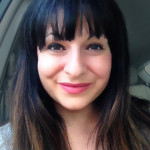Nawal Musleh-Motut is a Doctoral Candidate and Sessional Instructor in the School of Communication, Simon Fraser University, Canada. Her work focuses on ‘witnessing’ between Israelis and Palestinians with relation to their respective national traumas. She argues that empathy is necessary for this process, but not sufficient. In her view, it also requires an ethical commitment to achieving security and justice for all.
My research involves a critical examination of the national collective memories of the Holocaust and the Nakba for Israelis and Palestinians, respectively. I have a strong interest in narratives relating to the trauma of these events, and the role such narratives play in sustaining the Palestinian-Israeli divide. Using a unique family photograph-based storytelling methodology, I seek to create the occasions and conditions necessary for ethical engagement and ‘witnessing’ between Palestinians and Israelis. This involves participants exchanging personal stories, using photographs, about how the Holocaust or the Nakba affected their lives.
Following the American philosopher, Professor Kelly Oliver, I believe witnessing takes place when an individual testifying to trauma regains their subjectivity, in other words when they are understood by other people as an individual with freedom and agency, rather than as ‘the other’ or as an object. Witnessing of this kind happens not through recognition of an individual and their experiences by an audience, but rather when the latter takes up the ethical obligation to respond to and address that person and their testimony. This Insight considers the ethical potential and limits of empathy in this process.
Empathy, defined as the ability to understand and feel for another, has tremendous ethical potential in my research. For instance, my participants’ willingness to first join and stay engaged in this study speaks to their recognition of the Holocaust and the Nakba, as well as their capacity for empathy toward members of the other culture. Such empathy is absolutely necessary for fostering mutual understanding and peacebuilding. To date, all of my participants have demonstrated empathy toward one another, albeit to varying degrees, with a large majority appearing to have truly witnessed each other’s stories. The latter is evidenced through their deep intellectual and emotional engagement in the study, desire to meet face-to-face and share their stories and photographs publically, and their commitment to collaborating on possible future dialogue and peacebuilding initiatives.
Yet there are limits to empathy’s potential in this type of interaction. On the one hand, participants may demonstrate restricted or limited forms of empathy. Certain participants consciously or unconsciously bare false witness to the other participants’ stories when their actions or comments close off the possibility of ethical response and address. For instance, a person may state that they empathize with another person’s experience of trauma, but quickly go back to defending their own or their nation’s actions and victimhood. In such instances, some level of empathy may have been achieved, but not witnessing, as defined above.
My research, as well as that of several other scholars, suggests that false witnessing may be attributable to one or more of the following factors: adherence to national or familial myths and silences; the safety of master narratives and victimhood; a participant’s unwillingness to acknowledge how their actions or privileges implicate them in the other participants’ trauma; and fear of backlash or judgment from their fellow participants, families, and/or communities. It might also be due to a participant’s own trauma or post-traumatic stress; numbness from compassion or empathy fatigue; misunderstanding or misusing other’s stories; or frustration over the lack of empathy shown by fellow participants to their own story.
On the other hand, research also suggests that too much empathy can be unhelpful. Over-associating or identifying with other participants and/or their stories may have problematic effects: boundaries between oneself and the other can become blurred, resulting in the minimization or negation of power imbalances, differences or privileges; empathy may be used to appease guilt, shame or responsibility for past, present or future actions or privileges; and participants may appropriate, misunderstand or misuse others’ stories for their own benefit. These effects are sometimes manifested in uncritical redemptive narratives, in other words, ‘we are all the same.’
In order to offset these limits or problems associated with empathy, we must demonstrate what the historian Dominick LaCapra terms ‘empathic unsettlement’ – an ethical commitment on the part of the listener to feel for the other and to understand their story while stopping short of fully identifying with them. This entails an ethical obligation between a testifier and their audience in which the latter responds to and addresses the former or, as Oliver terms it, an ethics of witnessing.
In short, while extremely productive, the ethical potential of empathy can be limited by problematic collective associations and redemptive narratives that risk the negation, appropriation or trivializing of others participants’ stories, thus sustaining the Palestinian-Israeli divide. This is why I’ve sought to create the occasions and conditions for ethical engagement and witnessing between my participants. In this space their commitment not only to empathize, but to address and respond to one another, has allowed them to move past problematic and unethical competing claims of victimhood and comparative histories, toward ethical engagement, connective histories, and joint solidarity.
In closing, empathy is absolutely necessary, but simply not sufficient for the re-instatement of participants’ subjectivities, the witnessing of one another’s stories, and the bridging of the Palestinian/Israeli divide. The latter can only be achieved through an ethical commitment to creating a safe and just life for all.
Published: July 2016.
View as PDF
